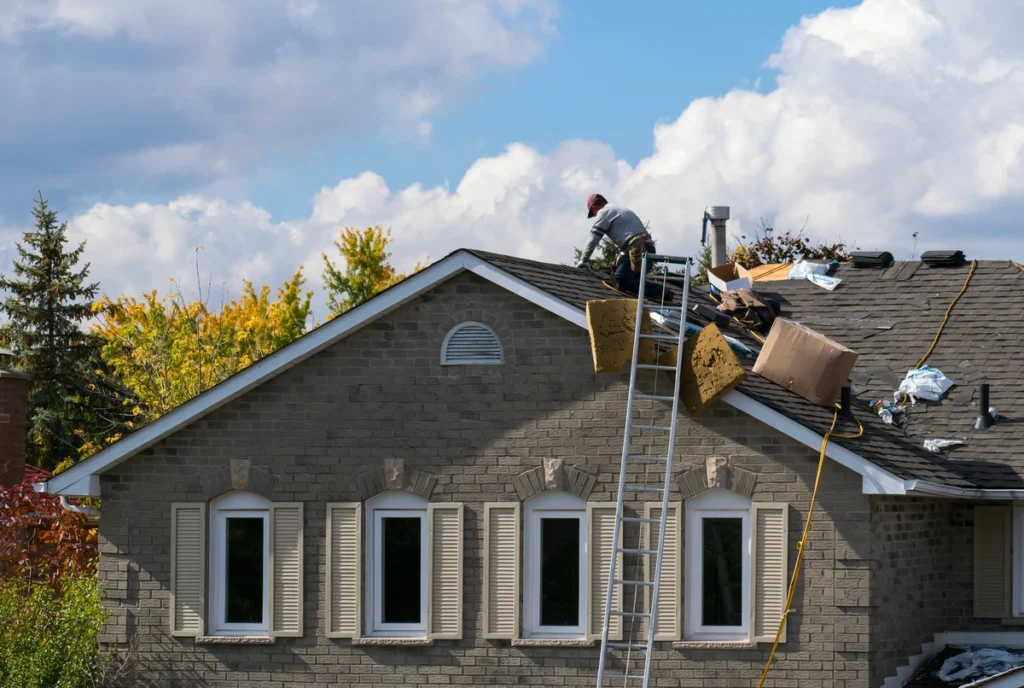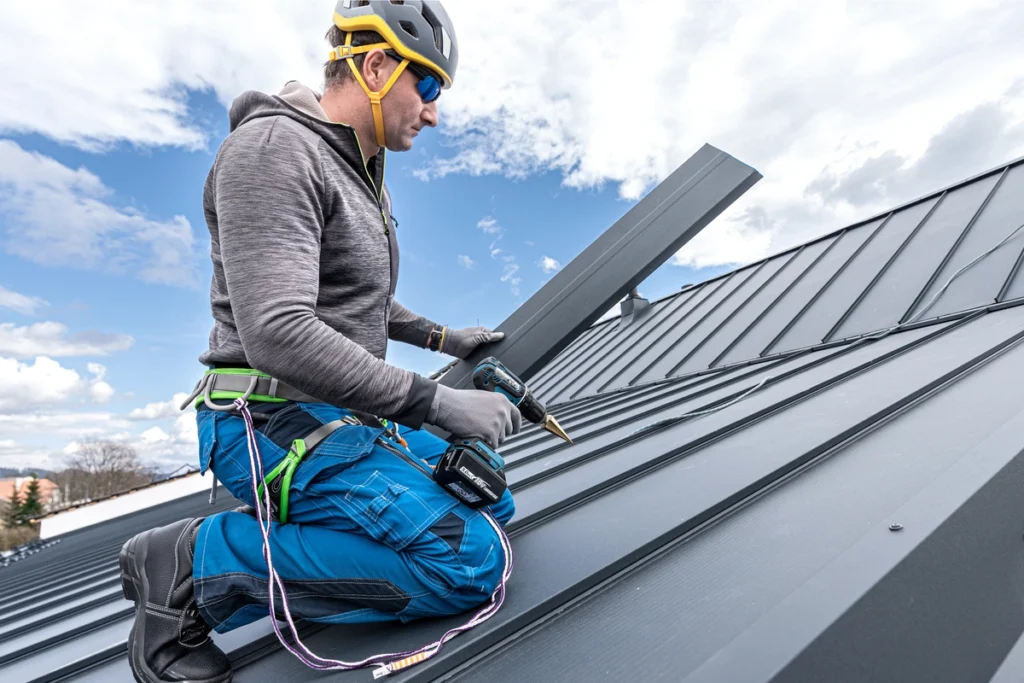
Blog
Homeowner’s Guide to Emergency Roof Repair
Your roof is your home’s first line of defense against the elements and other dangers. As a homeowner, it’s essential to maintain your roof not only as it ages but after emergency situations, such as sudden damage caused by a severe storm or random event.
Below we’ll explain everything you need to know about how to handle an emergency roof repair situation. Keep reading to learn more.

What Does Roof Damage Look Like?
The need for an emergency roof repair (or repairs) typically results from some sort of damage. However, this damage isn’t always created as suddenly as it seems. Roofs that are aging or have withstood severe weather conditions will eventually show damage somewhere.
The key is knowing how to recognize roof damage as soon as possible so you can act quickly to prevent further damage from occurring.
Roof damage typically looks like the following:
- Water stains or leaks. Water stains are telltale signs that you have roof damage — specifically a leak. While you won’t always see dripping water, you may notice stains on the ceilings or walls closest to your attic or access space. If the stains are yellow or brownish, it’s an indicator that moisture has been accumulating for a while, which is a bad sign.
- Damaged or missing shingles. Damaged or missing shingles are another obvious sign of roof damage. It’s also an indicator of an aging and weakening roof, which may mean you’re due for a replacement.
- Missing granules. Asphalt shingles have a layer of granules that act as a defense mechanism against weather and debris. Heavy storms can cause the granules to fall off, leaving bald spots and the rest of the shingles vulnerable to more damage.
- High energy bills. If your roof isn’t properly ventilated or sealed, your HVAC system will have to work overtime to keep your interior temperatures at a comfortable level. If you notice a sudden spike in your energy bill, it could be a sign of roof damage.
Emergency Roof Repair 101

When it comes to emergency roof repair, the primary goal is to prevent further damage from occurring to protect your home’s structure as well as your and your family’s safety. However, that doesn’t necessarily mean fixing the problem on your own.
Here’s how to properly handle emergency roofing situations:
1) Inspect the Damage
As soon as you start to notice that something is off or after a severe storm or hurricane passes, the first thing you want to do is inspect the potential damage.
Beginning indoors, take a close look at your attic or access space and the ceilings and walls closest to those spaces. From there, walk around your property and inspect your roof from the ground up for missing shingles, debris, dents, and other signs of damage.
2) Document Everything You See
As you inspect your roof damage and property, be sure to take clear photos of everything. This includes any damage you see on your home’s sidings and elsewhere, as it can help support your insurance claim if needed.
3) Lay a Tarp Down if Necessary
If there are large areas of damage to the top of your roof, including missing shingles and holes, you’ll want to lay a tarp down immediately. You can find the right size tarp at any local hardware store; just be sure it extends several feet beyond the damaged area and comes with an adhesive.
It’s recommended that you call your local roofing professionals to apply an emergency tarp to your roof so you don’t have to do it yourself.
4) Carry Out Smaller Roof Repairs
If you’re able to do so, start patching any small damages, such as cracks, small holes, or missing shingles. This will give you a head start on preventing any further damages while you wait for your roofing contractor to come by for a proper inspection.
Your other option — and the recommended option — is to find a local roofer that offers same-day emergency repairs.
Have a Trusted Roofer on Speed Dial

As a homeowner, it’s important to find a roofing specialist that you can depend on when there’s an emergency. Once you do, you’ll want to keep their number handy in case a big storm, falling tree, or age results in sudden damage to your roof. The roofing professionals at Avenue Roofing are here to help with your roof repairs, whether you have an emergency or simply need extra support when filing a claim with your insurance company for storm roof damage. Give us a call or visit us online to book your free inspection and receive an accurate estimate and the best roofing recommendations in Jacksonville, Florida.



